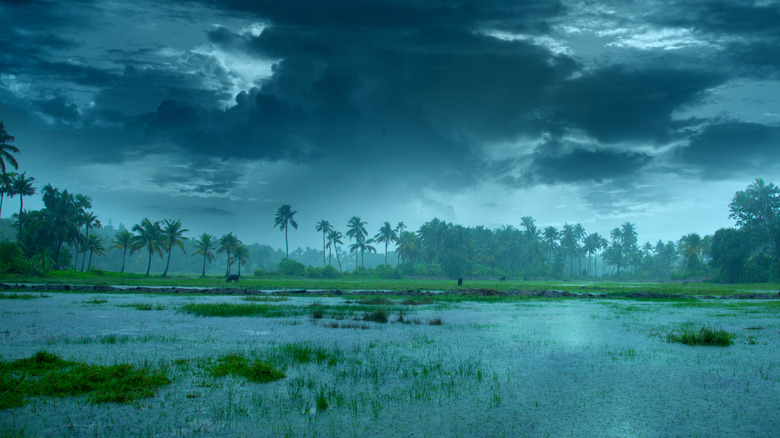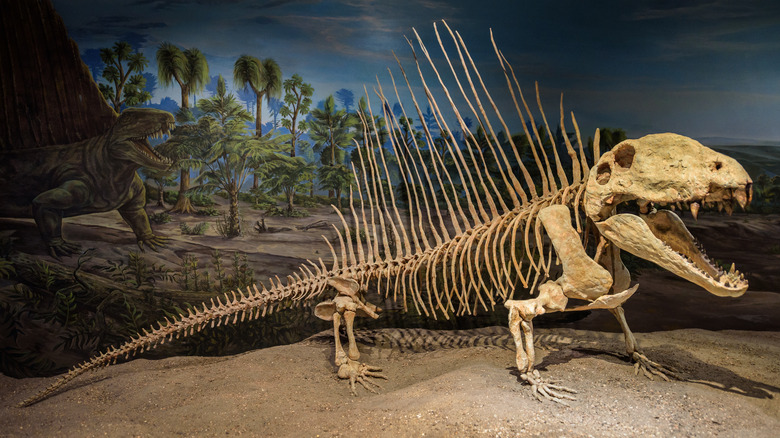The Truth About The Million-Year Rainstorm After The Triassic Era
Many places in the universe that host unimaginable weather patterns. Jupiter's Great Red Spot is a hurricane larger than Earth that has been raging since before its (confirmed) discovery in 1831. Meanwhile, its moon Io has one of the most volcanically active surfaces in the solar system, caused by the immense gravitational pull of its neighbor (via Popular Mechanics). When the topic of a million-year rainstorm comes up, it might make sense to attribute this to some far-off world as well. Yet researchers believe such an extraordinary event happened on Earth millions of years ago (via Nature).
During the Triassic period, the world's continents had not yet taken their modern shapes and instead formed the supercontinent of Pangaea. Synapsids, reptilian stem-mammals, were among the dominant forms of life, while the early archosaurs that would become the dinosaurs lived in their shadow, per the Natural History Museum. However, the changing geography of late-Triassic Pangaea is believed to have spelled the watery end for this hierarchy.
Centuries of rainfall likely cleared a path for dinosaurs to dominate the world
According to PBS Eons, the mountainous coast which previously kept the Pangaea dry suddenly failed to do so 232 million years ago, possibly due to continental subduction that proceeded to suck rain clouds into the desert-like mainland. This immense 1-2 million year environmental change is known as the Carnian Pluvial Event and led to plant life, the animals adapted to eat them, and the carnivores adapted to eat the latter going extinct (via Live Science). Humidity soared during this time, while the rains left evidence of massive floods and rivers that undoubtedly had a more immediate effect on local populations.
Archosaurs and other reptiles such as turtles and lizards were able to survive the rainfall, emerging into a new landscape full of ecological niches left vacant by their long-gone competitors (via SciTechDaily). Unlike the synapsids, early dinosaurs were able to adapt and eat the new plants that emerged during the rains, while predators likewise adapted to hunt them in an origin story that was ironically replicated by mammals millions of years later.

